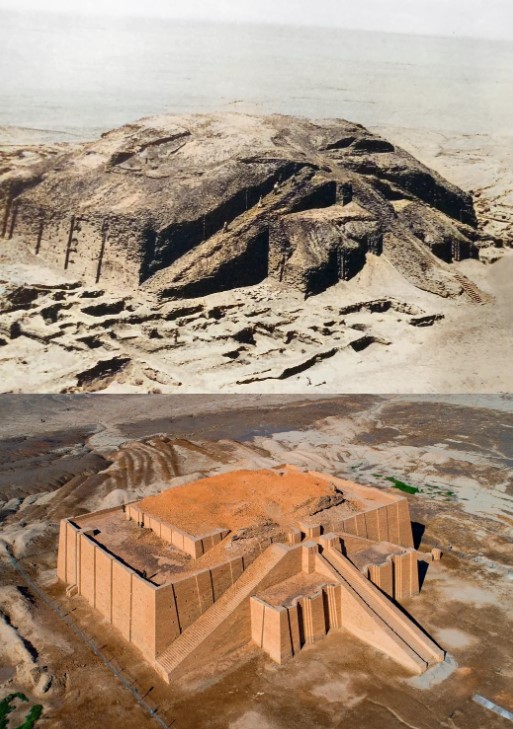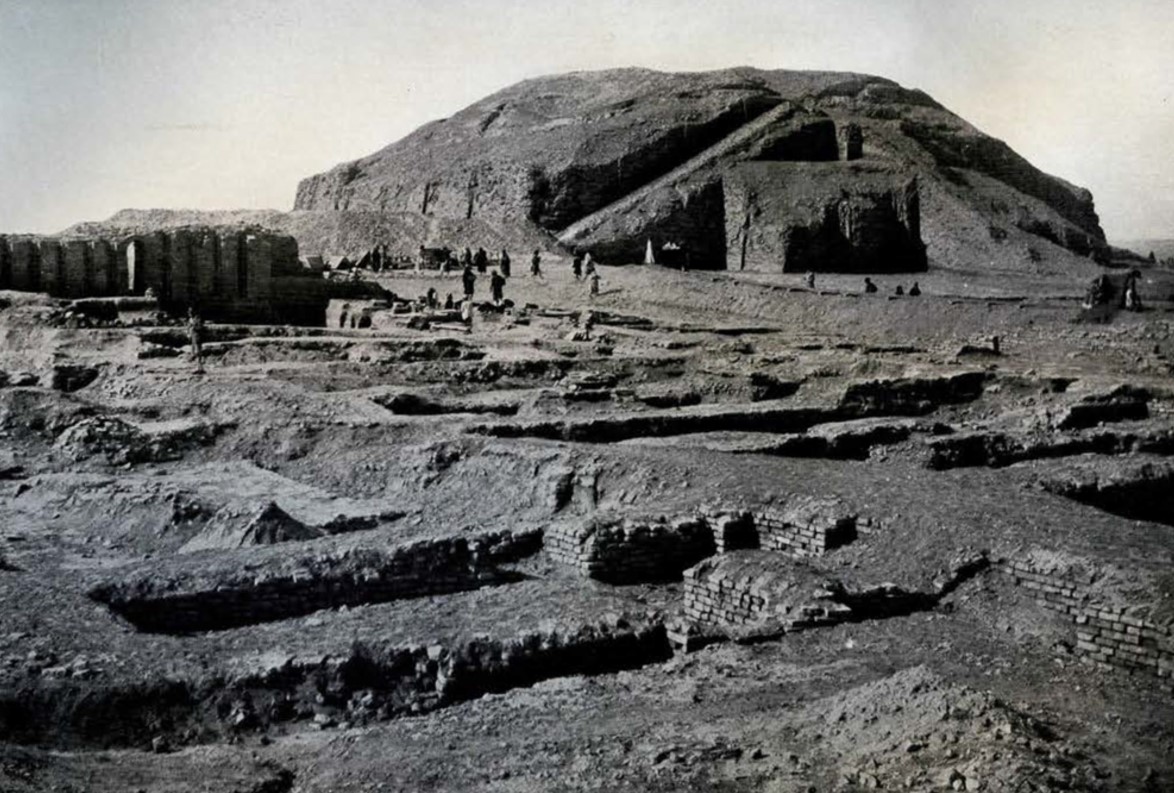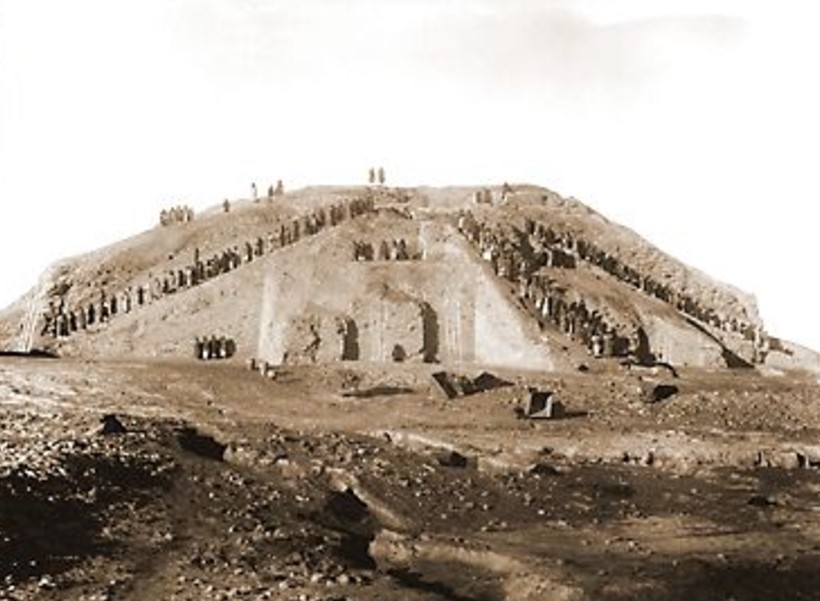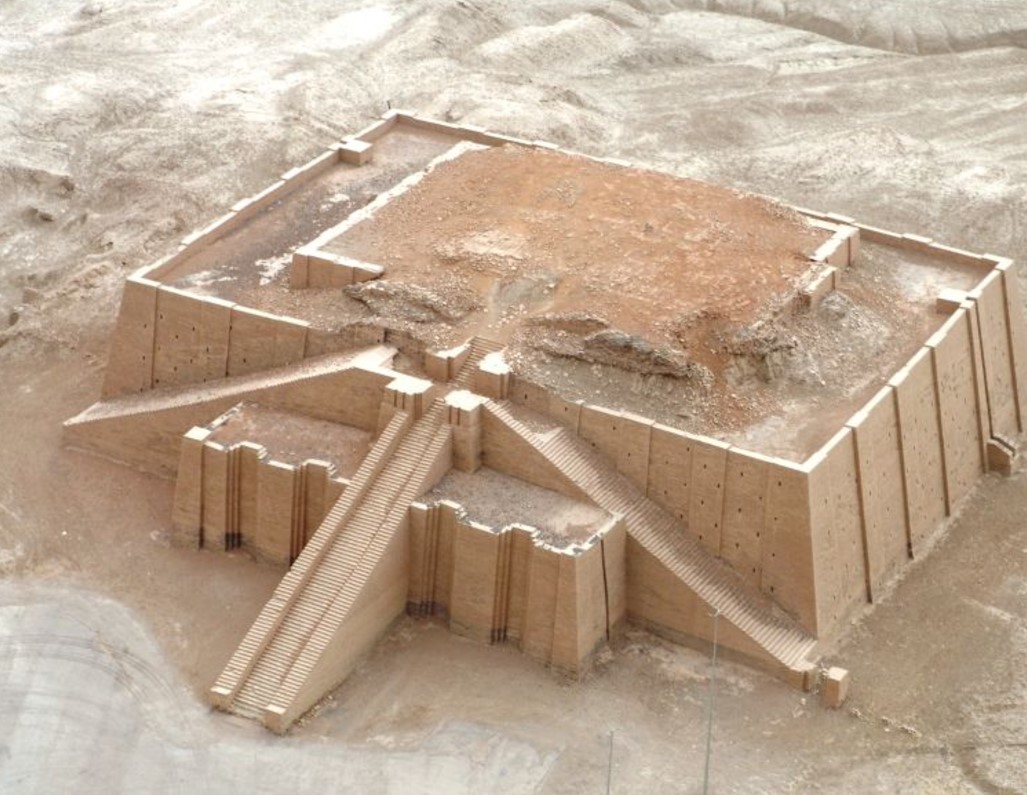The Great Ziggurat of Ur is a timeless testament to the architectural ingenuity and devotion of the ancient Sumerians. Built some 4,000 years ago during the reign of Ur-Nammu around 2,100 BC, the Ziggurat was dedicated to the Moon God Nanna, the divine protector of the city-state of Ur. Located in present-day Iraq, this architectural wonder has withstood the ravages of time, undergoing significant excavation and restoration efforts. Join archeology.dulichvn.net to explore the history of this iconic structure, its condition before excavation, and its transformation after restoration.
History of the Great Ziggurat of Ur
1. Construction and Purpose
The Great Ziggurat of Ur was built as a towering temple to honor Nanna, the Moon God. This massive structure symbolized not only religious devotion but also the city-state’s political power and cultural achievements. Rising in a series of terraces, the Ziggurat was a focal point of spiritual life in Ur, embodying a bridge between the heavens and the earth.

2. Architectural Design
The Ziggurat featured a multi-tiered design with a solid core of mud bricks and an outer layer of baked bricks. This meticulous construction technique showcased advanced engineering skills. A grand staircase led to the summit, where a shrine dedicated to Nanna once stood. Its design reflected both aesthetic beauty and functional durability, meant to last through generations.
3. Decline and Neglect
Following the fall of the Sumerian civilization, the Ziggurat fell into neglect. Centuries of abandonment, natural erosion, and human intervention left the structure in ruins. By the 20th century, only the lower levels remained visible, buried under layers of sand and debris.
Before Excavation: A Forgotten Monument
1. Hidden Beneath the Sands
Before excavation, the Great Ziggurat lay partially buried, with its grandeur concealed beneath centuries of sand and sediment. The structure appeared as little more than a mound, its true scale and significance unknown to the outside world.

2. Impact of Time and Erosion
Wind, rain, and heat took their toll on the exposed portions of the Ziggurat. The mud-brick core suffered extensive weathering, while the baked bricks eroded unevenly. Without protection, the Ziggurat’s impressive form had largely disappeared, leaving only faint traces of its former glory.
3. Rediscovery
The Ziggurat caught the attention of archaeologists in the 19th century during explorations of ancient Mesopotamia. Initial surveys hinted at its historical importance, paving the way for systematic excavations in the 20th century, particularly by British archaeologist Sir Leonard Woolley.
After Excavation: A Restored Legacy
1. Archaeological Efforts
Excavations led by Woolley in the 1920s and 1930s unearthed the Ziggurat’s base and revealed its structural elements. Layers of debris were carefully removed, exposing the remnants of the monumental staircase and terrace walls. These efforts provided invaluable insights into Sumerian culture and architecture.

2. Restoration Work
Modern restoration efforts began in the latter half of the 20th century, focusing on preserving and reconstructing the Ziggurat. Damaged bricks were replaced, and protective measures were implemented to prevent further erosion. Restoration aimed to balance historical authenticity with structural stability, allowing the Ziggurat to stand as a cultural and educational resource.
3. The Ziggurat Today
Today, the Great Ziggurat of Ur stands as a partially restored monument, drawing visitors and historians from around the globe. It serves as a symbol of Iraq’s rich heritage and the enduring legacy of the Sumerians. The site is also a reminder of the need to protect and preserve ancient treasures for future generations.
Significance of the Ziggurat in Modern Times
1. Cultural Heritage
The Ziggurat is a cultural landmark that highlights the achievements of one of the world’s earliest civilizations. Its preservation underscores the importance of safeguarding historical sites that define human history.

2. Architectural Inspiration
The design of the Great Ziggurat has inspired countless studies on ancient architecture and engineering. Its tiered structure and use of materials reveal the ingenuity and adaptability of the Sumerians.
3. Symbol of Resilience
The Ziggurat’s restoration demonstrates humanity’s commitment to reviving and cherishing the past. Despite centuries of neglect and destruction, the monument continues to inspire awe and respect for its creators.ep;t
Conclusion
The Great Ziggurat of Ur is more than just an ancient structure; it is a bridge connecting modern humanity to its ancient roots. From its construction as a spiritual hub to its rediscovery and restoration, the Ziggurat’s journey reflects the enduring legacy of the Sumerians and their profound contributions to human history. Visiting the Ziggurat today is not merely a trip through time but an acknowledgment of the resilience of culture, the advancements of ancient engineering, and the importance of preserving our shared heritage.

CÁC TIN KHÁC
Mary Walton: The Forgotten Inventor Who Helped Clean Up America’s Cities
Tomb of Queen Nefertari in the Valley of the Queens, Egypt
Discover the Hypostyle Hall of the Temple of Hathor at Dendera
Venus de Losange: Unveiling the Mystery of a 20,000-Year-Old Paleolithic Icon